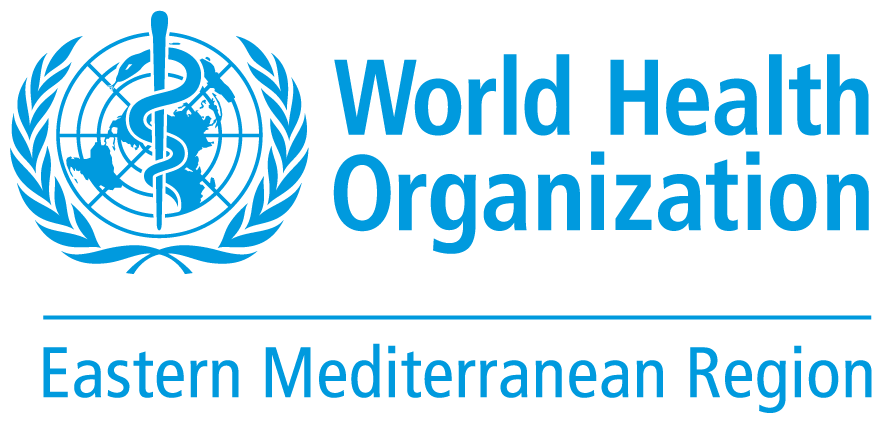WHO event addressing public health priorities
Keywords: polio, immunization, vaccination, Eastern Mediterranean
Citation: World Health Organization. Thirty-eighth meeting of the Eastern Mediterranean Regional Commission for Certification of Poliomyelitis Eradication. East Mediterr Health J. 2024;31(1):50–51. https://doi.org/10.26719/2025.31.1.50.
Copyright © Authors 2025; Licensee: World Health Organization. EMHJ is an open access journal. This paper is available under the Creative Commons Attribution Non-Commercial ShareAlike 3.0 IGO licence (CC BY-NC-SA 3.0 IGO; https://creativecommons.org/licenses/by-nc-sa/3.0/igo).
1https://applications.emro.who.int/docs/WHOEMPOL451E-eng.pdf
In May 2024, the WHO Regional Office for the Eastern Mediterranean convened the 38th meeting of the Eastern Mediterranean Regional Commission for Certification of Poliomyelitis Eradication (RCC) to review progress and identify gaps in polio eradication in the Eastern Mediterranean Region (EMR) and make recommendations for achieving regional certification.
Although Eastern Mediterranean Region (EMR) countries and territories have made remarkable progress towards polio eradication, there are concerns regarding the recent increase in the detection of wild poliovirus type 1 (WPV1) in endemic countries (1). Most EMR countries had achieved the minimum certification standard for surveillance indicators in 2023, with a non-polio acute flaccid paralysis (AFP) rate of more than or equal to 2 per 100 000 population of under-15-year-olds, and a stool adequacy rate of more than 80% (2). However, some EMR countries recently reported transmission and outbreaks of vaccine-derived poliovirus type 2 (cVDPV2) (2,3).
Significant progress has been made in the region in implementing the commitments of Resolution WHA71.16 (2018) on containment of polioviruses (4). As of the time of the meeting, all EMR Member States had successfully completed the containment activities for type 2 poliovirus and their potentially poliovirus infectious material inventories, while 20 out of 22 had acceptably completed their comprehensive surveys of all biomedical facilities. Most EMR countries supported by the Global Polio Eradication Initiative (GPEI) – Iraq, Libya, Sudan, the Syrian Arab Republic and Yemen – had started implementing polio transition, and 2 countries – Islamic Republic of Iran, Pakistan – had requested the designation of poliovirus essential facilities (PEFs) in their countries, following the award of certificates of participation.
However, there are gaps in the sensitivity of poliovirus surveillance, suboptimal population immunity and a lack of updated outbreak preparedness and response plans in some countries. Member States need to continue to review and improve their polio eradication strategies at national and subnational levels, strengthen surveillance and capacity for preparedness and response to outbreaks, and update documentation for certification.
Key recommendations from the meeting
Participants in the meeting made the following recommendations:
To Member States
- Conduct at least one polio outbreak simulation exercise every 3 years.
- Member States that have not done so should complete their survey of facilities with poliovirus stocks and potentially infectious materials.
- Develop plans for mitigating polio risks among high-risk populations.
- Develop national action plans to improve polio surveillance.
- Countries that have not done so should conduct polio external independent surveillance review.
To WHO
Develop and share clear guidelines on the definitions, processes, timelines, and criteria for cVDPV elimination and VDPV eradication based on the new guidance on the certification of cVDPV elimination and VDPV eradication.
Make the iVDPV surveillance in Egypt, Islamic Republic of Iran, Pakistan, and Tunisia more systematic and support initiation of iVDPV surveillance in other prioritized countries.
References
- World Health Organization. EMR Polio Bulletin, Issue 1318, Week 1. https://www.emro.who.int/images/stories/polio/documents/XLS/Polio_Fax_issue_2024/EMR_Polio_Bulletin_Issue_1318_Week_01-2024.pdf?ua=1.
- World Health Organization. Advancing health for all by all: Report on the implementation of Vision 2023 for the Eastern Mediterranean Region. Cairo: WHO Regional Office for the Eastern Mediterranean, 2023. https://applications.emro.who.int/docs/Advancing-Health-For-All-by-All-Report-eng.pdf?ua=1
- Global Polio Eradication Initiative. Eastern Mediterranean health leaders call for redoubled efforts for a defining year for polio. Geneva: World Health Organization, 2023. https://polioeradication.org/news/eastern-mediterranean-health-leaders-call-for-redoubled-efforts-for-a-defining-year-for-polio-2/.
- World Health Organization. Poliomyelitis – containment of polioviruses: WHA71.16. Geneva: World Health Organization, 2018. https://apps.who.int/gb/ebwha/pdf_files/WHA71/A71_R16-en.pdf.


